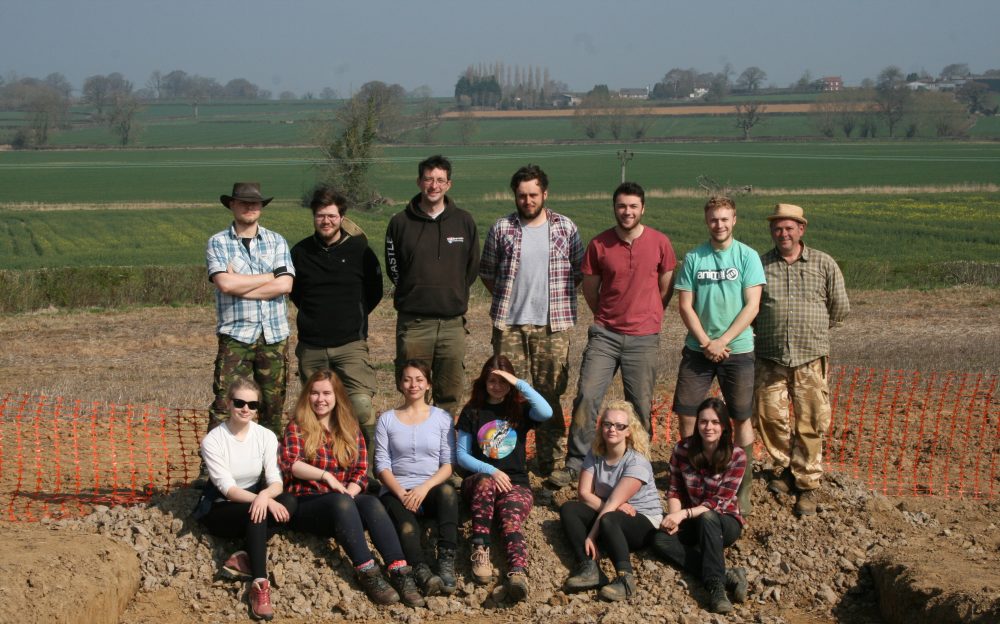Dr Kevin Hayward, a specialist in geological materials and ceramic building materials at Pre-Construct Archaeology, is examining the stone and brick finds from the Barrow DMV excavations.
He’s recently completed a report on part of a stamped brick we found in the upper fill of the medieval ditch. The brick probably belonged to a small barn that used to stand in the field and was demolished in the 1970s when the earthworks were bulldozed.
The following is an extract of Kevin’s report on the brick:
The edge of quarter of a kiln brick with a curved incomplete stamp read
…WN CLA…
Each letter measured 15mm high with a neat stamped suggesting machine impression, typical of late 19th to early-mid 20th century manufacturer.
Consultation of the web site for brick stamps could not find a match. However it would seem likely that the second word CLA forms part of CLAY or CLAYWORKS
The Crown Clay Company operating in the same district of Bristol (St Georges – Crews hole) on the bank of the River Avon as the Bristol Clay Company (see below) between 1880 and 1887 is a possible candidate given the lettering …WN CLAY
Use
Kiln or refractory bricks were used from the second quarter of the 19th century onwards in response for the demand for building materials that could resist the increasingly high temperatures required in the iron and steel making processes, gas retorts, as well as kiln and glass manufacturing industries to name but a few. They are also associated with boilers, locomotives, ovens and any process that involves high temperatures – even heated greenhouses.
Geological Origin
The clay, derived from high alumina and silica palaeosols from the Upper Carboniferous Coal Measures is not local to this part of Somerset dominated by geologically younger Lower Jurassic sands, clays calcareous limestones and limestones. However with the advent of the railways, kiln bricks were distributed throughout the UK from fireclay manufacturers in the West Midlands (Stourbridge); South Wales, South Yorkshire, Tyne and Wear and Glasgow.
The Somerset Coalfield, some 30km NNE, lies closest to Lufton. With the Bristol Coalfield (further west) also relatively close by. Fireclays from these deposits were worked and manufactured into kiln bricks e.g. The Bristol Fire Clay Company in operation from at least 1876 to 1911 and Crown Clay Works 1880 to 1887 and Crown Brick and Tile Company into the first decade of the twentieth century



